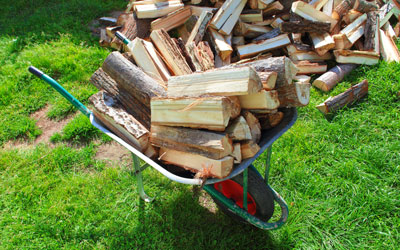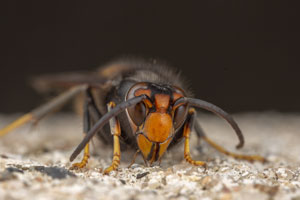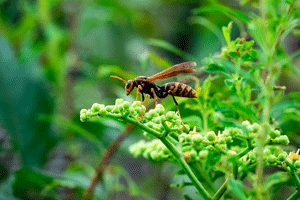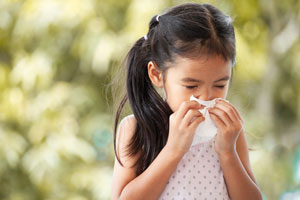Hindsight may be 20/20, but when it comes to protecting your family and home against pests this year, you can be proactive with the help of Pest Defense Solutions. We are helping homeowners prepare for the upcoming pest season by offering insight into anticipated pest activity.
At Pest Defense Solutions, we have examined trends, company data and our own field experiences to determine the following six pest predictions. Additionally, we have provided preventative tips to help keep your home pest-free* this year.
Disease-spreading mosquitoes, such as the yellow fever mosquito and the Asian tiger mosquito, have recently surged in some Western states. These mosquitoes, as well as the common house mosquito, spread diseases such as the Zika virus, West Nile virus, and Eastern Equine Encephalitis (EEE). A bite from a mosquito can also spread the parasite that causes heartworm in pets.
Homeowner Tips: West Nile virus and other mosquito-borne diseases, can increase with rising populations. And, mosquitoes only need one tablespoon of water to lay their eggs! To protect yourself and your family, dispose of any standing water around your home and always wear an EPA-approved insect repellent when spending any time outdoors.
Rat populations have increased over the past several years, and this may be partly due to warmer than usual winters. We can expect to see that trend continue as rodent populations, especially in suburban areas, increase. Warmer winters, a booming construction pipeline, lack of sanitation control, and lack of affordable housing are all issues that have advanced the swell of recent rat activity.
Homeowner Tips: To prevent rodents from entering your home, utilize the following prevention tips: Keep shrubs and trees cut back from home, especially thick ground cover that can serve as hiding places for rats. Ensure that trees do not overhang, touching the roof of your home. Seal any exterior openings larger than a nickel with rodent-proof material such as hardware cloth or flashing. Finally, seal and tie trash bags, placing them into garbage cans with tight-fitting lids.
Termites are one of the most destructive pests, causing homeowners in the United States $6 billion in property damages each year. These wood-destroying pests are a constant challenge for homeowners in the Western U.S., and this year, termites could prove to be even more damaging. The experts at Pest Defense Solutions have seen an increase in activity from subterranean and dampwood termites in many areas this year.
Homeowner Tips: Earth-to-wood contact provides an avenue for termites to enter homes and structures. To deter termites, eliminate soil to wood contact and avoid moisture accumulations near your homes’ foundation. Termites can be present for years before homeowners ever see signs of their activity, causing considerable and costly damage. Avoid these costs by having a termite protection plan in place. Speak to your pest control provider about risk and protection options for your home.
Cockroach populations have increased dramatically over the past several years, due in large part to warmer weather and increased rainfall. Cockroaches carry diseases, infest stored food, and then spread these diseases through their excrement. Cockroach removal is vital as infestations can be serious if not taken care of in a timely manner.
Homeowner Tips: To deter an infestation, cockroach-proof your home by sealing small cracks and crevices around windows and door frames with a silicone-based caulk. Keep a clean kitchen, sweeping, mopping and wiping up any spills. Check that door seals, including the one on your garage, are in place and intact. If you’re experiencing cockroach problems, speak with your pest control professional to determine the best solution for your home.
If you have noticed more flies this past year, you are not alone. Although they’re more active in the summer, house flies reproduce year-round. Filth flies – house flies, bottle flies, flesh flies – generally live and breed near human habitats and their numbers have increased in recent years. Increasing population density, waste management practices that haven’t kept pace with growth, and a general trend toward a warming climate for the fly pressure all contribute to increasing this disease-spreading insect.
Homeowner Tips: The house fly and other types of “filth flies” are not only nuisance pests; they also have the potential to spread the disease to humans and animals. To protect yourself and your family, repair any damaged screens on windows and doors. Keep trash stored away from your home and make sure that all trash cans have tight-fitting lids.
Spiders are carnivores, eating other insects and thriving in wet environments. Increased moisture leads to an increase in the insects that spiders eat as a food resource. Heavy rain and warmer temperatures have created the perfect conditions for insects and spiders to flourish. Although beneficial for our ecosystem, most people prefer spiders to stay outside where they belong.
Homeowner Tips: To keep spiders out of your home, keep food put away in tightly sealed storage containers. This will help eliminate ants, roaches and other pests, which will leave spiders with no food source. If the thought of spiders lurking is alarming, try changing your white outdoor light bulbs to yellow light bulbs, which attract fewer insects that can serve as food for the spiders. There are a few species of spiders that can live indoors and need to be controlled by spider removal experts.
The experts at Pest Defense Solutions agree that a proactive approach can help eliminate pest issues before they appear. With these pest predictions in mind, take time to evaluate your current pest control plan and make sure that you have the protection you need to protect yourself and your family from pests this year.










